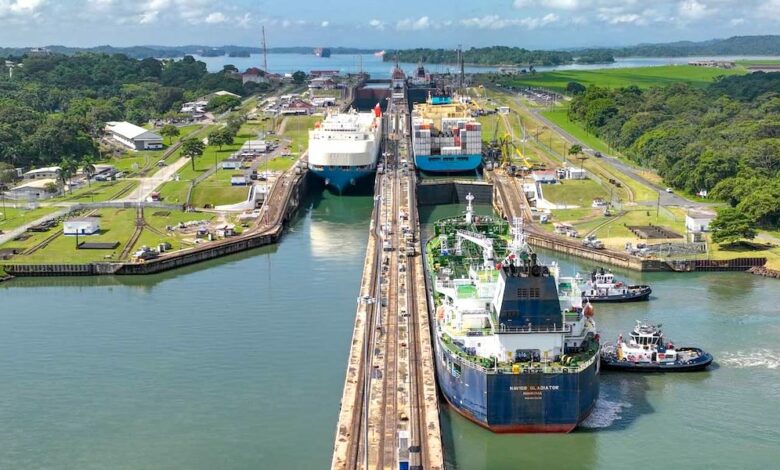 [[{“value”:”
[[{“value”:”

Stillstrom and the Panama Canal Authority have signed a memorandum of understanding to implement an offshore charging technology to reduce emissions from vessels idling in and around the Panama Canal.
The Panama Canal is a critical artery of global commerce and handles around 14,000 vessels per year. In recent years, has taken significant steps toward decarbonisation.
This partnership with Stillstrom represents another significant move in its ongoing journey to transform maritime logistics into a cleaner, more sustainable industry.
For ships awaiting transit or at anchor near landfall, coastal areas, and cities, traditional idling means running diesel or heavy fuel oil generators, releasing CO2, NOx, and particulates into the air. Stillstrom’s offshore charging technology will allow vessels to silently draw power, which eliminates the need to burn fossil fuels while waiting in line.
With this, the Panama Canal aims to set a precedent for other major trade routes, proving that sustainable shipping is a practical and achievable goal.
Stillstrom and the Panama Canal Authority will assess the potential for offshore charging solutions in the region and assess how these systems could reduce emissions, improve air quality, and support the Panama Canal’s broader decarbonisation strategy.
“Offshore charging has the potential to transform how vessels operate while waiting to transit, aligning with our vision for a cleaner, more resilient, and more efficient future for world trade,” said Ilya Espino de Marotta, deputy administrator and chief sustainability officer of the Panama Canal Authority.
“By implementing offshore power and charging solutions, we’re not only reducing CO2 emissions but also creating a pathway to cleaner air, cleaner seas, and a more sustainable future for global shipping,” added Kristian Borum Jørgensen, CEO of Stillstrom.
The post Stillstrom to assess offshore charging in Panama Canal appeared first on Energy News Beat.
“}]]
